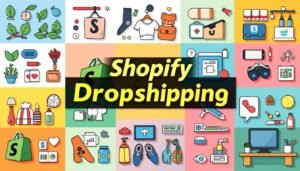Are you finding it hard to stand out in the ecommerce world? With global online sales expected to hit $8.1 trillion by 2026, the competition is fierce. But, there’s a way to not just survive but thrive. A solid ecommerce marketing strategy is the key.
An ecommerce marketing strategy helps you promote your products well. It also makes your operations more efficient and cuts costs. This lets you focus on the marketing efforts that really make a difference.
By knowing who your customers are, planning your content, and testing your campaigns, you can attract more visitors. This leads to more sales and loyal customers.
Key Takeaways
- Ecommerce sales are projected to reach $8.1 trillion globally by 2026, intensifying competition.
- A comprehensive ecommerce marketing strategy can help you stand out, improve efficiency, and reduce costs.
- Effective ecommerce marketing involves understanding your target audience, creating engaging content, and optimizing campaigns.
- Leveraging tactics like A/B testing, personalization, and customer service excellence can drive more sales and loyalty.
- Cross-selling and upselling strategies can further boost revenue from existing customers.
Understanding the Importance of an Ecommerce Strategy
In today’s digital world, an ecommerce strategy is key for businesses. It guides your marketing and sales teams. This helps them work better and save money. You can then use that money for the best Ecommerce Marketing plans.
Why You Need an Ecommerce Strategy to Increase Sales
An ecommerce strategy makes your products stand out to buyers. It helps you get their attention and trust. Without one, you’ll find it harder to be seen in a crowded E-commerce Conversions space.
With a good plan, you can make shopping easier for customers. This leads to more online sales and money for your business.
Benefits of an Ecommerce Strategy
Having an ecommerce strategy brings many benefits to your business. These include:
- Working more efficiently and saving money, so you can focus on Digital Marketing Campaigns
- A clear plan for your marketing and sales teams, making them more effective
- Connecting with buyers and earning their trust and loyalty
- Being seen as a leader in your field with a strong online presence
- More Online Sales Strategies and money by improving the customer experience
Creating a detailed ecommerce strategy lets your online business reach its full potential. It helps you stay ahead in the fast-changing digital world.

Build a Comprehensive Understanding of Your Target Audience
Effective Ecommerce Marketing and Online Sales Strategies need a deep understanding of your audience. Use social media, website analytics, and online surveys to learn about your customers. Join online communities to see what people want and dislike.
Knowing your audience well is key to making great products and Customer Retargeting campaigns. The more you know, the better you can meet their needs. This leads to more engagement and sales.
To understand your audience, look at these points:
- Demographic information: age, location, gender, income, education level, relationship status, and occupation.
- Psychographic data: interests, hobbies, values, attitudes, behaviors, and lifestyle preferences.
- Purchase behavior: browsing patterns, cart abandonment rates, product preferences, and pain points.
- Feedback and sentiments: customer reviews, social media comments, and direct survey responses.
Use both primary and secondary research to get a full picture of your audience. This way, you can make Ecommerce Marketing strategies that really speak to your customers.
| Data Source | Insights Gained |
|---|---|
| Social Media | Audience interests, pain points, and engagement patterns |
| Website Analytics | User behavior, conversion rates, and product performance |
| Online Surveys | Customer preferences, satisfaction levels, and feature requests |
| Market Research | Competitor analysis, industry trends, and total addressable market |

“68 percent of customers expect all experiences to be personalized according to the Zendesk Customer Experience Trends Report 2022.”
With a deep understanding of your audience, you can make Ecommerce Marketing strategies that really connect with your customers. This leads to more engagement, higher conversions, and loyalty to your brand.
Develop a Content Marketing Strategy
Creating quality content for your website, email, and social media can help a lot. It can nurture leads, build loyalty, and drive sales. When making your Ecommerce Marketing plan, mix informative and promotional content. Use blog posts, guides, case studies, videos, and demos.
Types of Content for Ecommerce Marketing
Ecommerce sites can use many content types to engage their audience. Some good choices are:
- Informative blog posts that answer common questions
- Product videos or demos to show features and benefits
- Detailed buyer’s guides and product comparisons
- Compelling case studies of successful customers
- Engaging social media content, like behind-the-scenes looks
Leveraging User-Generated Content
UGC can add a lot to your Content Marketing efforts. It’s seen as more real and relatable than brand content. Ask your customers to share their stories, photos, and reviews. Then, use this UGC on your website, emails, and social media.
With a varied content marketing strategy and UGC, you can grab your audience’s attention. This can lead to better Digital Marketing Campaigns and more sales and loyalty.
Ecommerce Marketing: Optimize with A/B Testing
Ecommerce Marketing needs constant improvement to keep sales up and conversions high. A/B testing is a key method for this. It compares different versions of your website or marketing materials.
A/B testing lets you try out different things. This includes page layouts, product descriptions, and email subject lines. By looking at the data, you can see what works best and make smart choices to improve your marketing.
Some common A/B testing ideas for ecommerce businesses include:
- Experimenting with different product page designs and content structures
- Testing various checkout processes and form layouts to reduce cart abandonment
- Comparing the performance of different promotional email subject lines and calls-to-action
- Analyzing the impact of various visual elements, such as product images, colors, and typography
- Evaluating the effectiveness of different navigation menus and category structures
To make A/B testing work, you need a clear goal, enough data, and careful analysis. Using data to guide your marketing can lead to big improvements. This way, you can always make your online presence better.
“A/B testing, when done well, can significantly improve click-through rates, conversions, loyalty, and other metrics.”

Remember, improving your Ecommerce Marketing is a never-ending task. A/B testing should be a big part of your plan. By always trying new things and learning from your data, you can give your customers the best online experience.
Market to All Stages of the Funnel
Good Ecommerce Marketing means reaching out to customers at every step. Knowing the sales funnel helps you make your Digital Marketing Campaigns better. This way, you can help leads grow and boost E-commerce Conversions.
Top of the Funnel (Awareness Stage)
At the top, focus on making your brand known. Use Online Sales Strategies like content, ads, and influencer work. This grabs your audience’s interest and shows how you can solve their problems.
Middle of the Funnel (Consideration Stage)
In the middle, build trust and keep people engaged. Offer demos, share success stories, and do webinars or Q&A. This educates and reassures your prospects, making them more likely to buy.
Bottom of the Funnel (Conversion Stage)
At the bottom, people know your brand and are ready to buy. Give special deals, use social proof, send emails, or offer free trials. This encourages them to buy, addressing their needs and doubts.
Using a full-funnel approach to Ecommerce Marketing can really help your Online Sales Strategies. It can make your business grow in a lasting way.

| Funnel Stage | Key Metrics | Effective Strategies |
|---|---|---|
| Awareness | Impressions, Clicks, CTR, Reach, Website Traffic | Social Media Ads, Informative Content, Influencer Partnerships |
| Consideration | List Building, Open Rates, CTR, Time on Page, Add to Cart | Product Demos, Case Studies, Webinars, Live Q&A |
| Conversion | Revenue, CPA, ROAS, AOV, CLV | Discounts, Social Proof, Promotional Emails, Free Trials |
Personalize Your Marketing Messages
In the world of ecommerce marketing, personalization is key. It helps you stand out and connect with your audience. Research shows 71% of buyers want personalized experiences from brands. Tailoring your marketing messages to each customer can build stronger relationships and boost your online sales strategies.
Email is a great way to personalize your marketing. Include the recipient’s name and tailor the message to their stage in the buyer’s journey. Reward loyal customers with special offers or discounts. Use email marketing automation to create content that fits each customer’s preferences and behaviors.
Personalization isn’t just for email. It can also improve the overall customer experience. Create detailed buyer personas to understand your audience better. Use social media platforms like Facebook to gather user data and make your ecommerce marketing campaigns more compelling.
Personalization is not just about the message. It’s also about delivering a seamless experience. Chatbots on your website can offer personalized customer service and support. This builds trust and loyalty.
Remember, personalization must be balanced. Customers want relevant experiences but also value their privacy. Be clear about how you use their data. Make sure your personalization efforts enhance their journey, not intrude.
“Personalization is no longer an option – it’s a necessity in today’s competitive ecommerce landscape. Brands that master the art of personalization will reap the rewards of increased customer engagement, loyalty, and sales.”
By making personalization a core part of your online sales strategies, you can improve your ecommerce marketing. You’ll build deeper, more meaningful connections with your customers.

Strive for Customer Service Excellence
In the competitive world of Ecommerce Marketing, great customer service is key. It drives sales and builds strong relationships. Companies that focus on customer experience see a 2-7% increase in sales and 1-2% in profit.
To give a great experience, use live chat, chatbots, and self-service knowledge. These tools offer quick help and make shopping easy for your customers. Learn more at this link.
Best Practices for Excellent Customer Service
Great Online Sales Strategies and Customer Retargeting mean more than just answering questions. Follow these tips to improve your service and keep customers coming back:
- Offer Omnichannel Support: Let customers contact you in their favorite ways, like email, phone, or social media.
- Prioritize Prompt Responses: Quick answers are important. 84% of shoppers value fast service when buying.
- Provide Personalized Interactions: Use customer data to offer solutions that fit their needs.
- Empower Your Team: Train your customer service team well so they can solve problems quickly and with care.
- Continuously Gather Feedback: Ask for feedback often to find ways to get better and meet changing customer needs.
By following these customer service best practices, you can make shopping with you a great experience. This will help your Ecommerce Marketing and build a loyal customer base ready for more business and Customer Retargeting.

“Providing exceptional customer service is no longer a nice-to-have – it’s a must-have for successful ecommerce brands. Businesses that prioritize the customer experience will reap the rewards in the form of increased sales, higher customer retention, and stronger brand loyalty.”
Encourage Repeat Business and Customer Loyalty
In the world of Ecommerce Marketing, keeping customers is as important as getting new ones. Building repeat business and loyalty can open up many chances to grow your sales. This way, you can make more money over time.
Research shows that customers who come back spend 67% more than new ones. It’s cheaper to sell to people you already know than to find new ones. The goal is to make shopping with you easy and fun, so they want to come back.
Strategies to Encourage Repeat Business and Loyalty
- Start a Rewards Program: Give discounts, special deals, or VIP perks to make customers want to buy again. It makes them feel special.
- Keep in Touch After a Sale: Use email, text, or social media to send cool stuff and updates. This keeps your customers happy and loyal.
- Use What Customers Say: Ask customers to share their stories and photos. This helps attract new people and keeps current ones happy.
- Focus on Great Customer Service: Always put your customers first. Fix problems fast and make sure they have a good experience. This makes them want to come back.
Using these methods can turn your current customers into a big help. They can bring in more sales, increase how much you make from each customer, and create a loyal group of fans.
“A 2 percent increase in customer retention can positively impact a company’s profits, equivalent to cutting costs by 10%.” – Industry Research
| Tactic | Impact |
|---|---|
| Loyalty Programs | Increase average sales transaction size and encourage repeat business |
| Email Marketing | Generate $36 for every dollar spent, driving strong returns and sales |
| Text Message Marketing | Provide immediate results and boost customer engagement |
By using these effective strategies, you can build a loyal customer base. This will help you get more repeat business and find new ways to grow your Ecommerce Marketing efforts.
Cross-Selling and Upselling Strategies
In the world of Ecommerce Marketing, two key strategies are cross-selling and upselling. They help drive Online Sales Strategies and boost E-commerce Conversions. These tactics can be more effective than getting a new customer. Customers might not know about premium products or if an upgrade fits their needs.
Upselling means selling a slightly better product than what the customer first wanted. This can greatly increase the Average Order Value (AOV). For example, Amazon’s personalized product recommendations made up 35% of their revenue. This shows the power of upselling.
Cross-selling is selling another product with the main one. Selling to an existing customer is 70% likely, compared to 20% with new ones. This makes cross-selling a key way to grow revenue in Ecommerce Marketing.
Companies that get upselling and cross-selling right see great results. Fanjoy, for example, raised its AOV by 11.7% with these techniques. OLLY, a vitamin brand, saw a 63% jump in subscription revenue with in-cart upsells.
To use these strategies well, building trust and offering real value is key. High-pressure sales often fail. But, offering good incentives and personalized suggestions can lead to more sales and a better customer experience.
By adding upselling and cross-selling to your Ecommerce Marketing, you can grow revenue, build loyalty, and stay ahead in the online sales world.
“Effective sales methodologies, including real-time suggestions based on customer behavior and past purchases, can boost sales by 20%.”
Conclusion
Using good ecommerce marketing can really help your online sales grow. It’s all about knowing who to sell to and making sure they feel special. You also need to make sure they have a great experience and come back for more.
With ecommerce, you can reach more people and make more money. Online sales are set to hit $6.9 trillion by 2025. This means big chances for businesses to grow and get more customers.
Having a solid ecommerce marketing plan is key to success. It’s about knowing what your customers want and giving it to them. By always improving your online marketing, you can lead in your field and make the most of the ecommerce world.
FAQ
What is the importance of having an ecommerce strategy?
An ecommerce strategy is like a map for your marketing team. It helps them work better and save money. This way, you can spend more on marketing that really works.
It helps you show your products in a way that grabs people’s attention. This builds trust and loyalty with potential buyers.
How can I better understand my target audience?
Use social media, website analytics, and online surveys to learn about your customers. Find out what they like and what they need. Join online groups to see what people talk about and what they want.
What types of content should I create for ecommerce marketing?
Make good content for your website, emails, and social media. This helps attract and keep customers. Use blog posts, guides, videos, and demos to share your message.
How can I leverage user-generated content?
User-generated content shows that people like your products. It’s more real than ads. Many customers trust it more.
How can A/B testing help optimize my ecommerce marketing?
Test different versions of your pages and ads to see what works best. This helps you find small changes that make a big difference. Test often to keep getting better.
How can I market to different stages of the buyer’s journey?
At the start, share helpful content to get people to know your brand. In the middle, engage with them by offering demos and sharing success stories. At the end, offer deals and special offers to make a sale.
How can I personalize my marketing messages?
Make your emails personal by using names and tailoring messages. Reward your loyal customers too. Use buyer personas to send targeted emails with content that matters.
What are best practices for delivering excellent customer service?
Offer fast help with live chat, chatbots, and self-help guides. This makes customers happy and keeps them coming back.
How can I encourage repeat business and customer loyalty?
Start a loyalty program and stay in touch with customers. Find ways to sell them more, like upselling and cross-selling.
What are cross-selling and upselling strategies?
Upselling means selling a better product than what the customer first wanted. Cross-selling is selling something extra with the main product. Both can be more profitable than getting a new customer.







